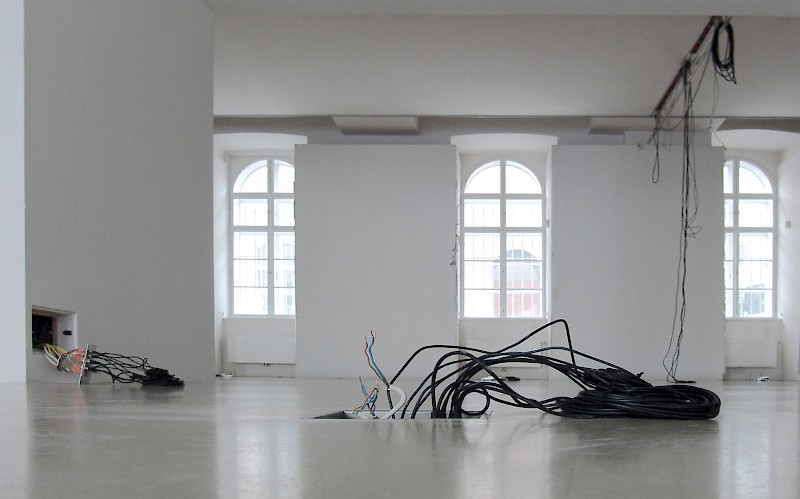Galerie Hubert Winter
Judith Fegerl, SELF (2010)
Installation, vary with installation
<p>The art space stripped bare faces its observers, freed from the essential prerequisites of a modern exhibition space such as artificial lighting, neutral hanging surfaces and an electricity supply. Only now, rid of its supporting functionality, is the suppressed identity of the space visible again.<br />
Dealing with the interface between human and machine runs like a thread through the artist’s previous work. Judith Fegerl repeatedly works with the combination of inorganic and organic material and creates constructions of the greatest technical perfection in the process. She shapes her sculptures with extraordinary aesthetic and functional precision using electricity for animation. Judith Fegerl’s previous works can be seen as self-contained hybrid units nourished by electricity. Precisely this material, electricity, which is fundamental to all her works, becomes focal to SELF.<br />
She intentionally liberates the neutral exhibition space, i.e. the white cube, from all of its fixtures and fittings. Covered windows are exposed, partition walls are torn down and lighting tracks disconnected. Interfaces for the infrastructure of the exhibition hall, such as data and electric connections, are revealed. The electric cables are laid bare. Fegerl combines all of the internal routes for audio, video and the Internet in a closed system forcing, as it were, all the processes involving content into one circuit.<br />
Fegerl shows the art space as an architectural and energy-providing shell for art objects, as a body without organs — like her human-machine units. The Kunstraum is hollowed out and opened at several places. The electric cables jut from the ceiling, walls and floor, rendering the inner life of the machine visible, and looking like the arteries of a dissected body. With SELF Judith Fegerl reveals a machine that normally leads a discrete existence in the background, and allows us to gaze deep into this body. She has undressed the Kunstraum and allowed it to show its self.</p>



